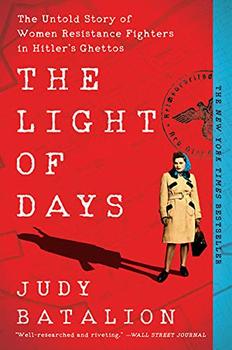Summary | Excerpt | Reviews | Beyond the book | Read-Alikes | Genres & Themes | Author Bio

The Extraordinary American Servicewomen Who Helped Win World War II
by Lena S. AndrewsWhen Peggy Carter first appeared on the screen in Marvel's Captain America, my reaction was, "Oh, that's clearly Hollywood imposing modern sensibilities on World War II. There weren't women serving in the military back then." Well, it turns out I was wrong. Very wrong. Women served in every branch of the U.S. military during the war, and not just as nurses. But, like virtually every gain by women, this opportunity didn't come easily. Even after they won the right to serve, women's contributions were consistently devalued and often went unremembered. That's the reason Lena S. Andrews wrote Valiant Women: The Extraordinary American Servicewomen Who Helped Win World War II.
Andrews' narrative begins well before Pearl Harbor. We can only comprehend these military women's struggles and contributions when we understand the context in which their divisions were formed. The U.S. was very unprepared for the war because the population had a bad taste in its mouth after World War I, and the resulting isolationism had shrunk the military in the years that followed. As it became clear that Americans would need to fight in Europe and Asia, those in power realized they didn't have enough men to staff the front, handle the logistics of supply lines, and manage the paperwork to keep it all straight.
Enter the women.
I expected this book to follow a handful of women in depth through the war. Andrews goes a different direction; few individuals make more than a passing appearance in its pages. Instead, she sketches the larger history through the eyes of both the high-level men who made the decisions and scores of women, both officers and rank-and-file, who answered the call. I found this to be a brilliant strategy on several levels.
First, it illustrates structurally the reality of the situation — that women's participation wasn't an aberration or a minor part of the war effort; it was broad, just like the contributions of the men who fought.
Second, it offers a big picture of the war in general. In order to understand why a particular group of women was stationed in or moved to a particular location, we have to see how those locations fit into the Allies' larger strategy. The women's stories were not distinct from the men's, but part of an ecosystem, so to speak. Painting the picture in broad strokes allows us to see the forest and not just the trees. If my experience is any guide, readers may well leave the book with a better understanding of World War II than they ever got in school.
Finally, incorporating bits of stories from many women gave me, at least, a new insight into history: that women of the past were not all the quiet, compliant homemakers our national mythology has painted them to be. We all know of people like Amelia Earhart, of course, but we tend to view her as the exception that proves the rule. Andrews' array of strong, career-focused women suggests that this is a misunderstanding of history. There were lots of ambitious women working in the 1940s, women who feel similar to those we know today: doctors, pilots, competent organizers, able to hold their own in a room full of men. At every turn, these women were underestimated, but they constantly outperformed what was expected of them.
Women trained troops. They acted as air traffic controllers, pilots, and airplane mechanics. In one memorable chapter, Andrews shares how a particular model of airplane was involved in many crashes because it had to be flown according to a different set of instructions from other planes, and cocky male pilots thought they knew better than these instructions. Realizing the flaw was in the men's psyche, the Army Air Forces Training Command had the women demonstrate the capabilities of the plane — safely — by following the rules. The men, shamed, learned to follow the instructions in order to prove they weren't less than the women. Obviously, this was insulting, but however backhanded the compliment, the fact remains that the war effort was more successful because of these women's involvement.
There was frustration at every turn, and Andrews details it all: resistance and obstructionism from Congress, from the chain of command, from male enlisted troops and officers. The courage, competence, and sheer grit of the women shines through on every page. This is true even when they aren't successful — but especially when they are. Andrews fills an important gap in popular knowledge of our own history. Women's roles in factory work during World War II are well remembered, but much of their military service is not. Valiant Women helps close that breach.
![]() This review was originally published in The BookBrowse Review in September 2023, and has been updated for the
September 2024 edition.
Click here to go to this issue.
This review was originally published in The BookBrowse Review in September 2023, and has been updated for the
September 2024 edition.
Click here to go to this issue.

If you liked Valiant Women, try these:

by Suzanne Cope
Published 2025
The gripping, true, and untold history of the Italian anti-fascist resistance during World War II, told through the stories of four spectacularly courageous women fighters.

by Judy Batalion
Published 2022
One of the most important stories of World War II, already optioned by Steven Spielberg for a major motion picture: a spectacular, searing history that brings to light the extraordinary accomplishments of brave Jewish women who became resistance fighters - a group of unknown heroes whose exploits have never been chronicled in full, until now.
Your guide toexceptional books
BookBrowse seeks out and recommends the best in contemporary fiction and nonfiction—books that not only engage and entertain but also deepen our understanding of ourselves and the world around us.